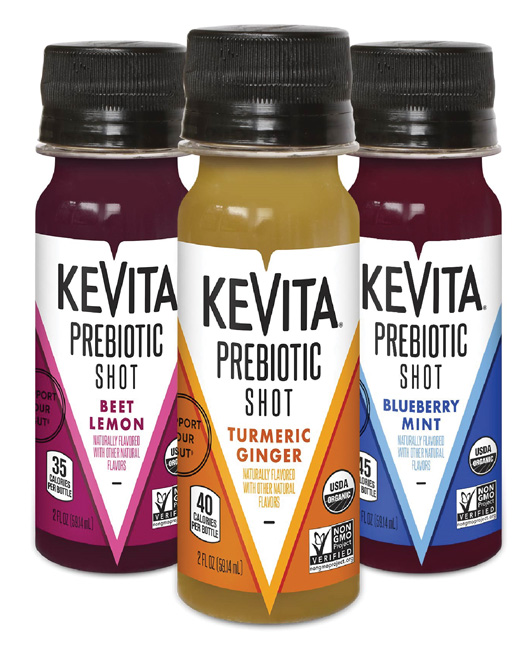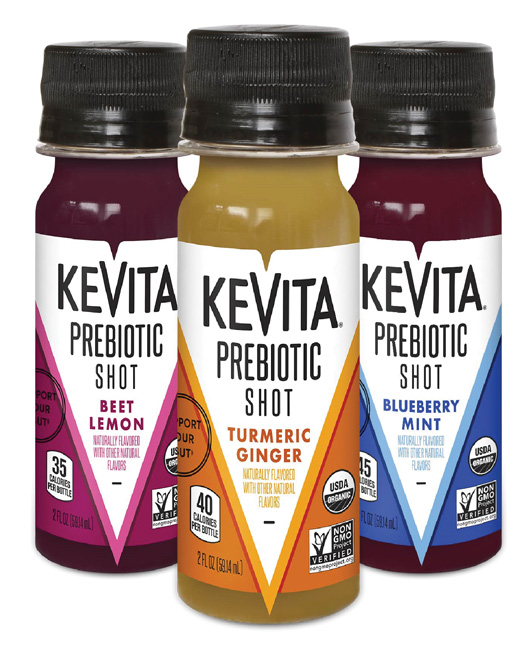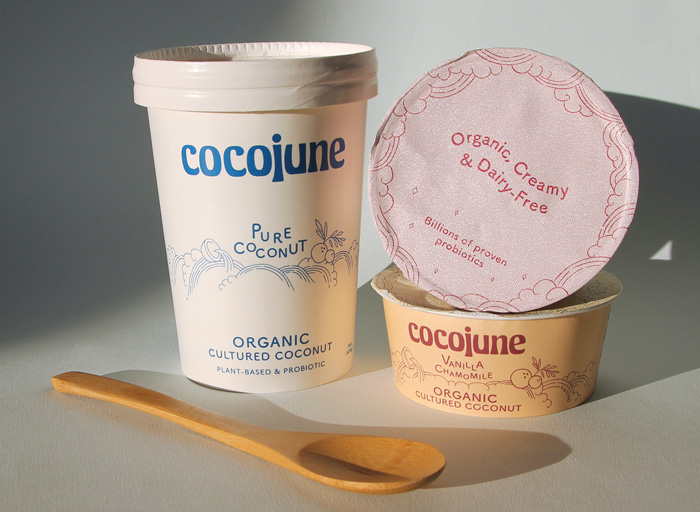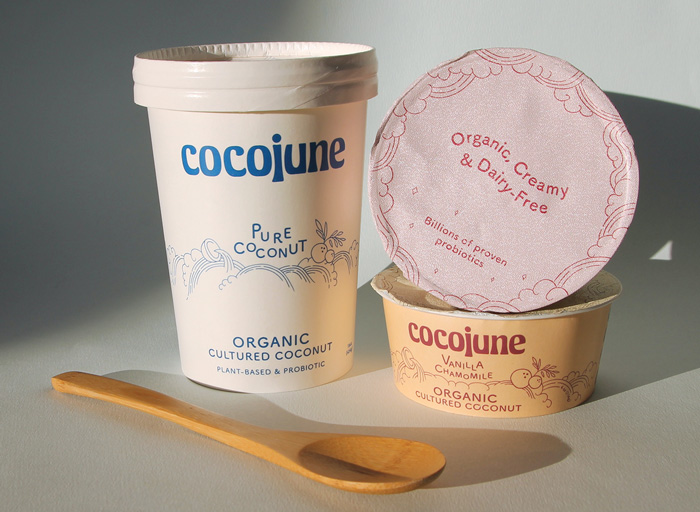
Not Just a Gut Feeling
Fermented foods category sales are growing as consumer interest in the microbiome mounts, triggered in part by the COVID-19 pandemic.
Article Content
The use of fermentation in the culinary arts dates back to prehistoric times as a method of preservation, and virtually every culture has a rich history of using some type of fermented foods and beverages—for example, kimchi in Korea, kefir in Russia, tempeh in Indonesia, and sourdough bread in Egypt.
Fast forward to the third decade of the 21st century, and fermentation is attracting renewed attention and interest in the wake of the COVID-19 pandemic, as consumers become more aware of the importance of gut health and the potential for warding off harmful bacteria—while growing their “good” cousins to build immunity.
Bob Hutkins, the Khen Shahani professor of food science at the University of Nebraska–Lincoln, definitely has noticed more chatter about fermentation since the pandemic began. “It checks off all the boxes—artisanal, local, natural, sustainable, innovative,” he says. “People are making sourdoughs at home; they’re making kimchi at home; they’re going to kombucha bars. It’s definitely got the Gen Xers and the millennials intrigued.”
Hutkins adds that larger companies that never had products in the category have been either swallowing up smaller ones, or developing their own divisions and product lines. “So it’s clearly not just the small companies, although that’s where a lot of the innovation is coming from,” he says. In addition to specialty companies, food industry heavyweights like Danone, Cargill, and ADM will be key players, agrees Research and Markets.
Market Size and Growth
SPINS data presented in a webinar by The Fermentation Association divides fermented foods into 10 categories with 57 individual product types. Fermented foods comprise 1.4% of overall food and beverage sales and saw 4% growth for the 52 weeks ending October 4, 2020, reaching $9.2 billion in sales in the United States, the SPINS figures show. (The figures exclude the large categories of alcoholic beverages and cheese to better observe trends in other areas.)
Yogurt-related products are by far the dominant subcategory, with 83.1% of overall sales and 2.8% growth to $7.6 billion for that 52-week period. Nonalcoholic beverages made up another 8.6% of sales and grew 4.4% to $791.6 million. The smaller slices grew significantly more: pickles and fermented vegetables, 4.7% of the category (and including individual items like sauerkraut and kimchi), rose 17% to $435.6 million; fermented sauces, 2.7%, were up 24% to $250 million; sake, 0.4%, rose 16% to $36.4 million; miso, 0.2%, increased 26% to $20.8 million; and plant-based meat alternatives, 0.2%, were up 26% to $21.8 million.
Yogurt sales had declined slightly before the pandemic but have since rebounded to a higher baseline, SPINS found. The same was true for fermented sauces, nonalcoholic beverages, and pickles, SPINS reported. Overall, kimchi, fermented sauces, and tempeh are driving the most growth.
Research and Markets has estimated that the fermented food and ingredient market will reach $689.3 billion in sales globally by 2023, driven by greater income, higher population, and increasing health awareness among consumers. European countries like the United Kingdom and Germany show the greatest promise for market penetration, according to Research and Markets, while the United States and North America overall are the next most promising. The fastest growth will come in South America and Asia-Pacific, particularly in China and India, the research firm forecasts.
Innova Market Insights predicted in 2018 that fermentation would be a key trend, and the company has observed an 11% average annual growth in fermented product launches globally since then, up 38% total in Western Europe, 31% in “Australasia,” and 30% in the Middle East/Africa, according to Lu Ann Williams, global insights director at Innova.
“It has grown a ton during the pandemic, which has fast-tracked the public’s knowledge of fermentation,” says Amelia Nielson-Stowell, editor at The Fermentation Association. “It’s had a significant impact on many businesses. Health-conscious consumers are flocking to fermented foods because of the health impact. There’s a widespread acknowledgment that … microorganisms can boost your gut microbiota and your immune system.”
“Not surprisingly, with the focus on having a strong immune system and gut health over the past 18 months, we’ve seen a surge in a lot of fermented foods,” adds Neal Vitale, executive director of The Fermentation Association. “In some cases, it’s buoyed the whole category; in others, it’s been a shift between different types of fermented foods.”
Nurturing the Microbiome
People are more conscious of the benefits for the digestive system that the probiotics in fermented foods offer as well as their immunity-boosting properties, Research and Markets notes.
Marketing products that boost gut health first gained traction in the 1990s, although it was hampered by regulations, especially in Europe, says Williams of Innova Market Insights. Her company’s recent survey of 10,000 consumers across 10 markets showed that about one-quarter had purchased products to improve their gut health in recent months.
“A day doesn’t go by without a story about the microbiome. Social media is full of people talking about it, and doctors on TikTok post videos explaining new developments,” she says. “COVID has put immunity top-of-mind as a health priority. We see a slightly higher percentage of consumers looking at immunity-boosting functions, as opposed to gut health alone.”
Packaged Facts notes that brands wanting to appeal to consumers based on gut health or immunity should offer products that are either sugar-free or made without added sugar or sweetener, as such consumers tend to be sugar-averse. This group of shoppers skews female, younger, flexitarian, and interested in organic, clean label, and other health claims.
True fermented foods contain live microbes, as opposed to those where the microbes are either removed or heat-treated, Hutkins says, noting that the microbes are killed, for example, in the baking of sourdough bread—whereas they are very much alive in kimchi, sauerkraut, or cultured dairy.
“The reason why those foods were popular for the previous 10,000 years is because they enhanced the preservation of foods, and they could prevent you from getting sick from occasional Salmonella or E. coli,” he says. “That’s still one of the strengths: live microbes can out-compete many of the pathogens in the gut and provide what we call colonization resistance. … They can communicate with the immune system and modulate immunity.”
Many consumers are drawn to fermentation for health-related reasons, agrees Alex Lewin, a board member at The Fermentation Association and author of Real Food Fermentation and Kombucha, Kefir and Beyond. “The gut biome, gut health angle is certainly something that nobody was talking about—definitely not 10 years ago and probably not even much six or seven years ago,” he says. “People in the United States are fascinated by food in a way they absolutely weren’t 20 years ago. Part of that is trying to find food that’s healthy and going to make them feel good. Fermented foods do have a legitimate claim in that regard.”
Nielson-Stowell notes scientific studies establishing these gut health benefits are somewhat limited in breadth because there’s not a lot of money behind them, the raising of which is a key pillar of The Fermentation Association’s mission. In addition to potential COVID-related benefits, she’s seen studies showing a lower risk of cardiovascular disease and type 2 diabetes along with longer life spans, as well as studies that link fermented foods with lower inflammation and improved immune response.
The KeVita fermented drink brand performed internal research in late 2020 about shifting consumer behaviors and attitudes toward wellness and boosting immunity during the pandemic. The company found consumers are paying more attention to their diets but expect products in the nonalcoholic categories KeVita plays in to perform “double-duty,” supporting one’s immune system first and foremost—but also tasting delicious.
Consumers are already well aware of the gut health benefits associated with fermented products although there’s no one-size-fits-all answer, says Klaus Ravnholt, president and cofounder of Cocojune, which has produced plant-based cultured products for foodservice since 2018 and for retail since 2019.
“Right now, we’re shooting very broadly, adding probiotics we’re selecting based on the scientific evidence: ‘How many clinical trials there are of a certain strain. How well did it perform in those trials?’” he says. “That doesn’t mean that strain is going to take refuge in each person, or that it’s going to work wonders for their health. In the future, you’ll be able to do much more personalized stuff. That’s going to grow the probiotics market. The question then becomes: ‘How can you marry that with consumer products that need to be sold at retail? How do you individualize that, to some extent?’”
Kheedim Oh, a board member at The Fermentation Association as well as founder and “chief minister of kimchi” for Mama O’s Premium Kimchi, believes more and more consumers are following the science about gut health—and potential linkages to areas like mental health. “No one thing is going to save you. You have to have this holistic approach,” he says, referring to COVID-19, adding that this includes supporting one’s immune system.
What’s New?
While dairy products like yogurt will remain the major subcategory within fermented foods, and kombucha enjoys the most launches outside that subcategory, others will continue to grow, partly with the help of communities on social media that have coalesced around them, Williams says, adding that top benefit claims tend to be organic, vegan, and probiotic.
“There are conversations about the benefits of eating other fermented foods like sourdough, cheese, sauerkraut, miso, and kimchi,” she says. “There is still a lot of consumer interest in authentic and natural products, and these products are supported by great storytelling. The market for fermented foods is only getting started.”
Hutkins is concerned about a trend he’s noticed among manufacturers of some fermented foods who want to make shelf-stable products by heat treating them to guard against the possibility that live microbes will produce gas and make them more acidic—and then adding other microbes that don’t produce gas. “They call them fermented foods with live microbes, but that belies the intent of what fermented foods should be,” he says.
Other trends that Hutkins notes include the addition of probiotics to fermented foods; the branding of fermented foods as being sustainable, natural, healthy, or organic; and an increase in restaurants making their own fermented foods. “There is a culinary interest in fermented foods that did not exist 10 or 20 years ago,” he says. “I would have never imagined making, for example, miso in a restaurant. But it’s being done.” (See sidebar on page 34 for foodservice trends.)
Nielson-Stowell sees less and less in the way of shelf-stable fermented foods. “The most dynamic brands are moving to the refrigerated section,” she says. “Ten years ago, Americans would think about mushy, beige-colored sauerkraut, sitting on a condiment tray at a baseball game. Today, we have brightly colored, fresh, crisp, uniquely flavored sauerkraut. Local is really big. Artisanal brands are coming out. Food as medicine has been a big trend. We’ve seen brands that put that on their labels: ‘live cultures.’ They’re labeling these with more scientific terms than we have seen before on food products.”
Kimchi, kombucha, kefir, and tempeh are growing in popularity, as is hard kombucha, says Lewin, an advisor to a brand in the latter space called Dr. Hops. “Kimchi certainly has made it—it was never obscure, exactly—but it started its rise with the Korean barbecue taco stands in L.A., and now it’s a normal thing, almost. You find it in regular mainstream grocery stores,” he says. “Regular kombucha came from obscurity. Now it’s … significant.” Kefir isn’t that different from a drinkable yogurt and might rise or fall about the same as the yogurt category, he adds, while “tempeh is on the rise, first of all among people who want to avoid animal products.”
Plant-based products competing against yogurt have the advantage of not needing to be as locally tied as dairy companies, according to Ravnholt. “As a brand, you can play a little wider,” he says. “We’ve been tripling our volume every year. The overall market’s grown a lot. The natural channel in retail already has a lot of shelf space allotted toward plant-based yogurt. … While fermented foods have always been one of the big pillars of processed foods, overall, it’s only growing.”
Ravnholt believes plant-based dairy brands will continue to innovate, working to improve the taste, texture, and nutrition of products. “We’ve gotten it sort of right, but we still want to improve it,” he says, adding that Cocojune is rolling out a product this fall called Overnight Oats that he likens to a probiotic rice pudding. “Millennials take their oats, soak them in yogurt in the fridge, and then the day after, it’s like pudding, almost,” he says. “We’re taking that concept and marrying it with our yogurt. What you get is a cultured product that has a different texture than yogurt.”
KeVita expects nonalcoholic fermented beverages to continue to perform well in 2022, and the company has added Prebiotic Shots in three flavors—Beet Lemon, Blueberry Mint, and Turmeric Ginger—to meet this demand. The company already had offered three other such beverages: Sparkling Probiotic Drink, Master Brew Kombucha, and Apple Cider Vinegar. (See the Startups & Innovators column on page 20 for more on the kombucha category.)
Oh, whose company most recently rolled out a hot sauce called Kimchili Sauce and who stages an annual event called Kimchipalooza, expects kimchi sales to stay strong. “I’m fortunate to be making a food that’s truly a superfood, and that can help support your immune system, something we all need in this day and age,” he says.

















